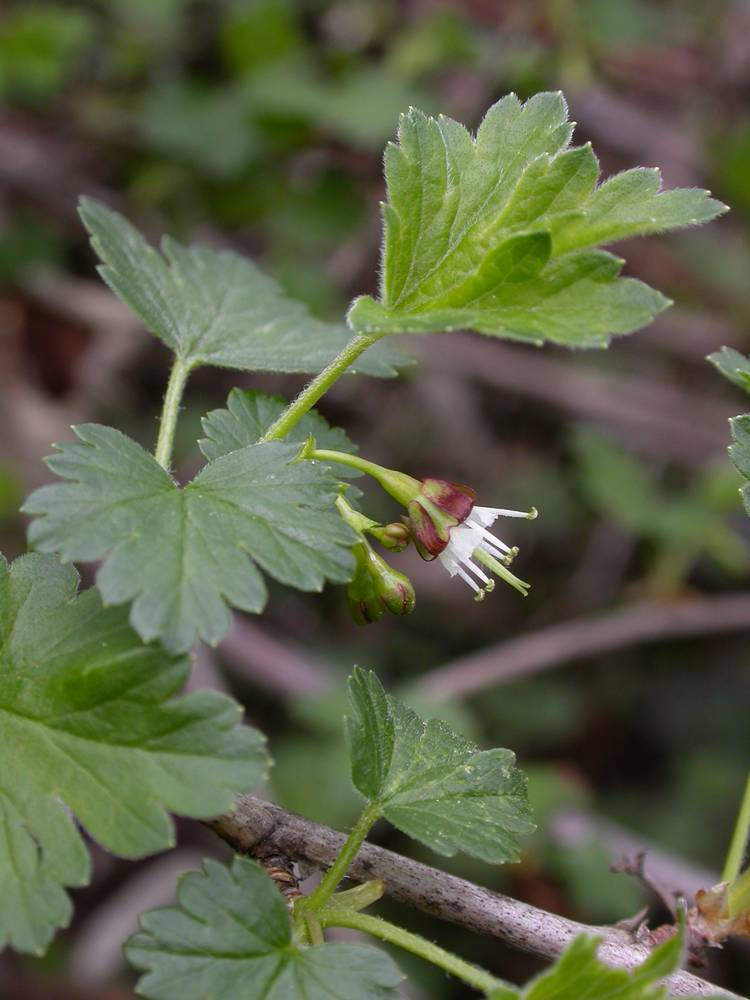
[This taxon will be assessed for treatment in volume 3 of Flora of Oregon, which is not yet published.]
Spreading gooseberry is a thicket-forming member of the currant family with gracefully arching branches and sparse but imposing 1-inch spines. Its nodding flowers are made up of a dark crimson calyx that sweeps backward with maturity to reveal small white red-tinged petals and protruding stamens. The round fruits are glossy purple and are edible. This gooseberry is well suited to moist and partially shady parts of the wildlife garden and makes an excellent barrier plant for the hedgerow.
as described under Ribes divaricatum
Plants 1-3 m. Stems erect to spreading, ± pubescent through-out; spines at nodes absent or 1-3, 5-20 mm; prickles on internodes absent or sparse. Leaves: petiole 1-3 cm, pilose with glandular and eglandular hairs, some plumose hairs at base; blade roundish to nearly reniform, 3- (or 5-)lobed, cleft 1/2 to midrib, proximal segments again shallowly cleft into 2 unequal lobes, 2-3.5 cm, base rounded to cordate, surfaces pubescent abaxially, subglabrous or finely pubescent adaxially, lobes cuneate, margins prominently crenate-serrate, apex rounded. Inflorescences pendent, solitary flowers or 2-4-flowered racemes, 2-4 cm, axis glabrous or pilose, flowers evenly spaced. Pedicels not jointed, 3-12 mm, glabrous or pilose; bracts oval, 1-2 mm, glabrous or ciliate with stiff hairs and glands. Flowers: hypanthium greenish or purplish, obconic, 1.5-3.5 mm, glabrous or copiously pubescent; sepals not overlapping, spreading-reflexed, red or reddish or purplish green, narrowly oblong-deltate, 3.4-6 mm; petals distally nearly connivent to overlapping, erect, white or pink to red, cuneate-lunate to obovate, not conspicuously revolute or inrolled, 1.2-3 mm; nectary disc not prominent; stamens 2.5-3.5 times as long as petals; filaments linear, 3.5-7 mm, glabrous; anthers cream, oval, 1 mm, apex rounded; ovary glabrous; styles connate ca. 1/2 their lengths, 5-11 mm, copiously pilose-villous in proximal 3/4. Berries palatable, purplish black, subglobose, 6-12 mm, glabrous. 2n = 16.Hybrids between Ribes divaricatum and R. niveum and R. divaricatum and R. lobbii have been propagated for the horticultural trade.